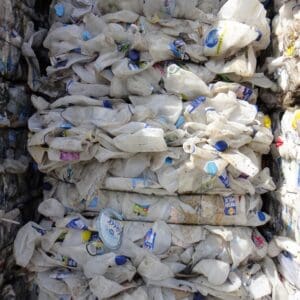Low-Density Polyethylene (LDPE)
Overview:
Low-density polyethylene (LDPE) is a widely used thermoplastic polymer renowned for its versatility and performance across various applications. Known for its low-density structure, LDPE offers a unique combination of flexibility, durability, and ease of processing, making it an essential material in the packaging, manufacturing, and recycling industries.
Low Density Polyethylene LDPE Key Characteristics
- Density: Typically ranges from 0.910 to 0.940 g/cm³, contributing to its lightweight and flexible nature.
- Molecular Structure: Features a highly branched polymer chain that gives it its low-density properties and facilitates its ease of processing and flexibility.
- Appearance: Generally transparent or slightly opaque; can also be colored or tinted depending on the application.
Low Density Polyethylene LDPE Properties
- Flexibility: LDPE is highly flexible, making it ideal for applications requiring a soft and pliable material.
- Chemical Resistance: Exhibits good resistance to various chemicals, including acids, bases, and alcohols.
- Moisture Resistance: Offers excellent resistance to moisture, making it suitable for waterproof and moisture-proof applications.
- Impact Resistance: This provides good impact resistance, which helps protect contents from damage.
Low Density Polyethylene LDPE Applications
- Packaging: Commonly used in producing plastic bags, films, and flexible packaging due to its flexibility and durability.
- Containers: These are used to make various types of containers, including bottles and lids.
- Pipes and Tubing: Employed in plumbing and irrigation systems due to its resistance to chemicals and moisture.
- Consumer Goods: These are found in various household items such as toys, furniture, and appliances.
Low Density Polyethylene LDPE Processing Methods
- Extrusion: LDPE is commonly processed using extrusion to create films, sheets, and pipes.
- Blow Molding: Used for producing hollow objects like bottles and containers.
- Injection Molding: Suitable for creating complex shapes and products.
Low Density Polyethylene LDPE Recycling
- Recyclability: LDPE can be recycled, though it is less commonly recycled than other plastics. It is typically identified by the recycling code “4.”
- Recycling Process: Recycled LDPE is often used to create new products such as plastic lumber, flooring, and more LDPE film products.
Low Density Polyethylene LDPE Environmental Impact
While LDPE is durable and versatile, it is a plastic material and poses environmental challenges related to waste and pollution. Recycling and proper disposal are crucial to minimizing its environmental impact. Efforts to increase the recycling rates of LDPE and reduce plastic waste are ongoing within the industry.
Conclusion
Low-density polyethylene (LDPE) remains a vital material in various industries due to its excellent combination of flexibility, chemical resistance, and moisture resistance. Its applications range from everyday consumer products to specialized industrial uses, making it a key player in the world of plastics.













Reviews
There are no reviews yet.